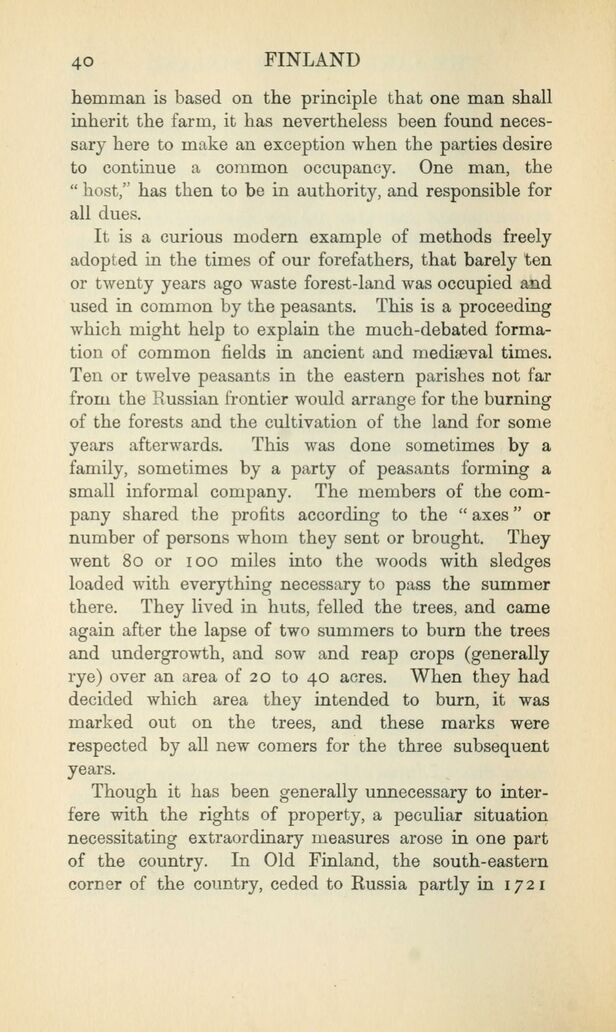
Full resolution (JPEG) - On this page / på denna sida - III. The Land Laws of Finland

<< prev. page << föreg. sida << >> nästa sida >> next page >>
Below is the raw OCR text
from the above scanned image.
Do you see an error? Proofread the page now!
Här nedan syns maskintolkade texten från faksimilbilden ovan.
Ser du något fel? Korrekturläs sidan nu!
This page has been proofread at least once.
(diff)
(history)
Denna sida har korrekturlästs minst en gång.
(skillnad)
(historik)
kronohemman is based on the principle that one man shall
inherit the farm, it has nevertheless been found
necessary here to make an exception when the parties desire
to continue a common occupancy. One man, the
“host,” has then to be in authority, and responsible for
all dues.
It is a curious modern example of methods freely
adopted in the times of our forefathers, that barely ten
or twenty years ago waste forest-land was occupied and
used in common by the peasants. This is a proceeding
which might help to explain the much-debated
formation of common fields in ancient and mediæval times.
Ten or twelve peasants in the eastern parishes not far
from the Russian frontier would arrange for the burning
of the forests and the cultivation of the land for some
years afterwards. This was done sometimes by a
family, sometimes by a party of peasants forming a
small informal company. The members of the
company shared the profits according to the “axes” or
number of persons whom they sent or brought. They
went 80 or 100 miles into the woods with sledges
loaded with everything necessary to pass the summer
there. They lived in huts, felled the trees, and came
again after the lapse of two summers to burn the trees
and undergrowth, and sow and reap crops (generally
rye) over an area of 20 to 40 acres. When they had
decided which area they intended to burn, it was
marked out on the trees, and these marks were
respected by all new comers for the three subsequent
years.
Though it has been generally unnecessary to
interfere with the rights of property, a peculiar situation
necessitating extraordinary measures arose in one part
of the country. In Old Finland, the south-eastern
corner of the country, ceded to Russia partly in 1721
<< prev. page << föreg. sida << >> nästa sida >> next page >>